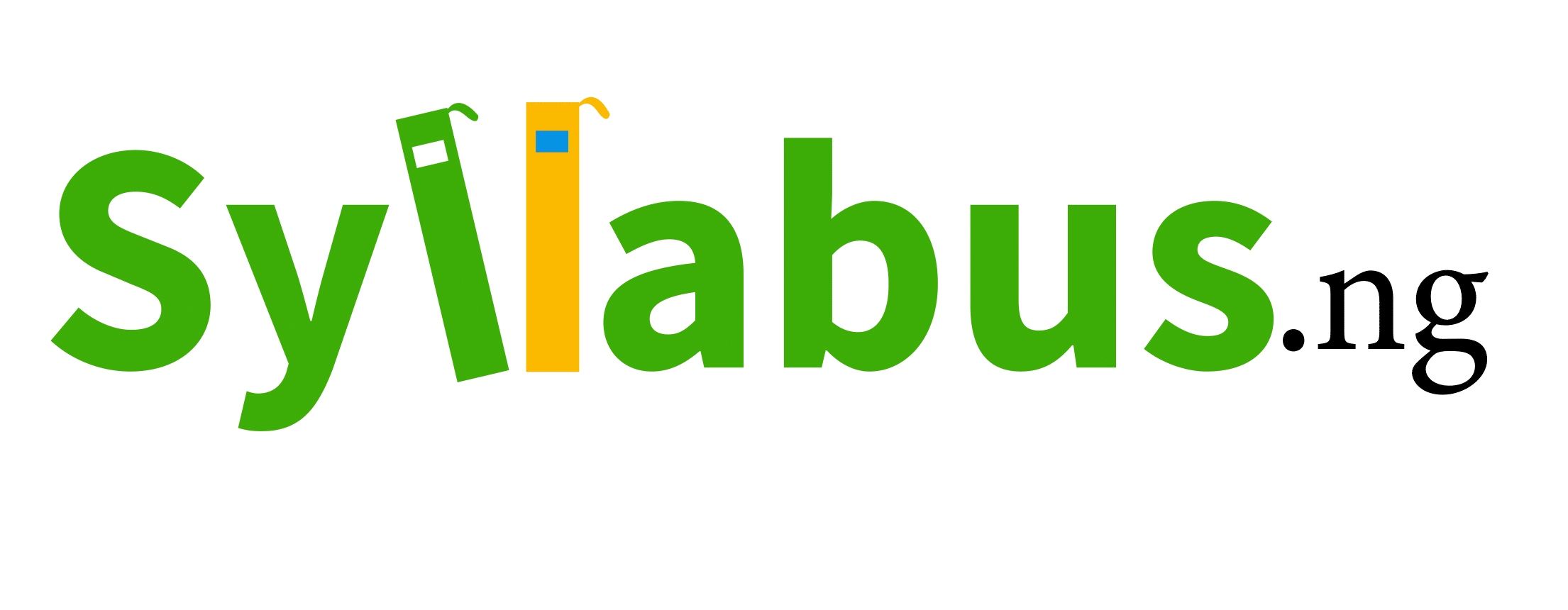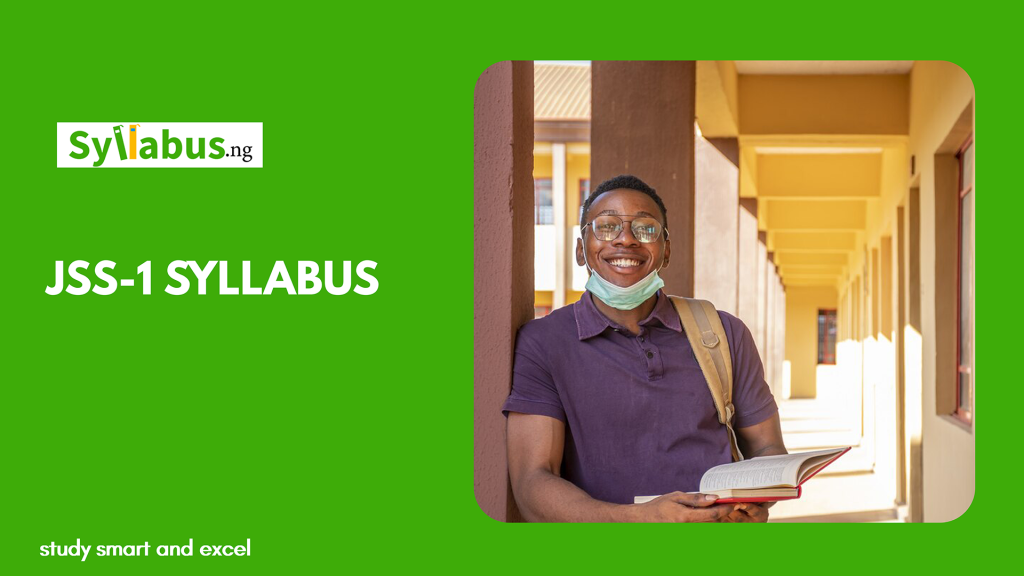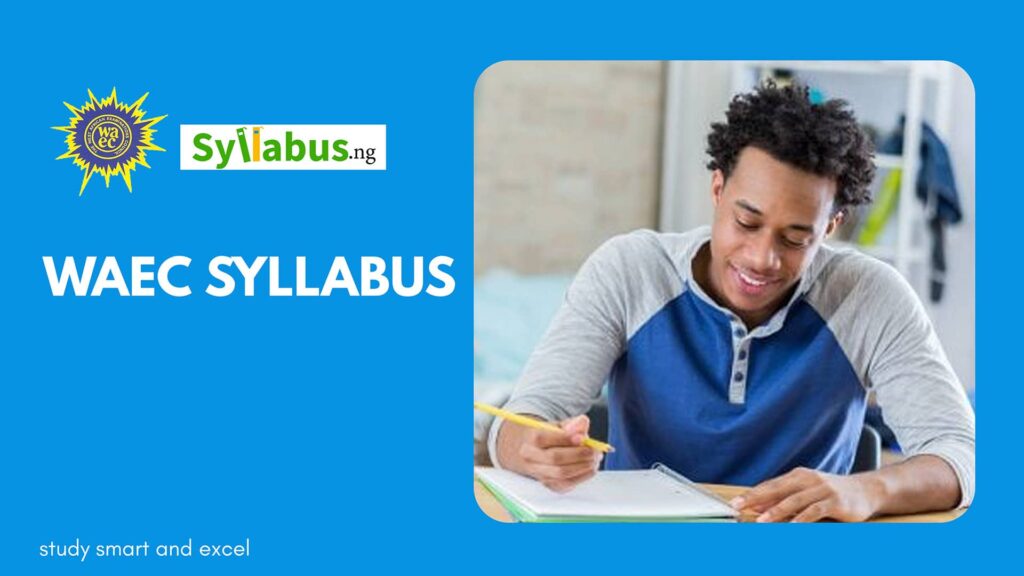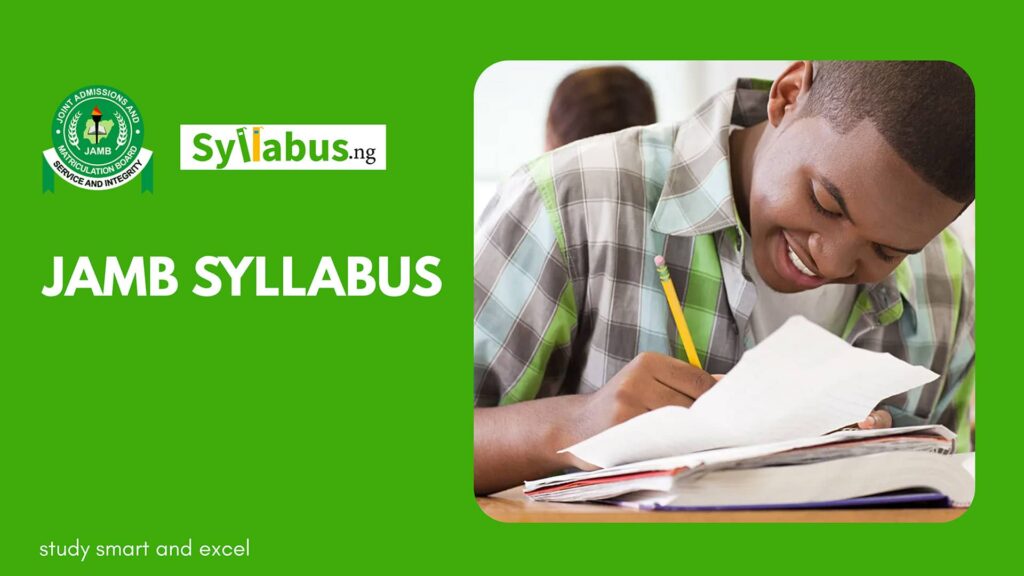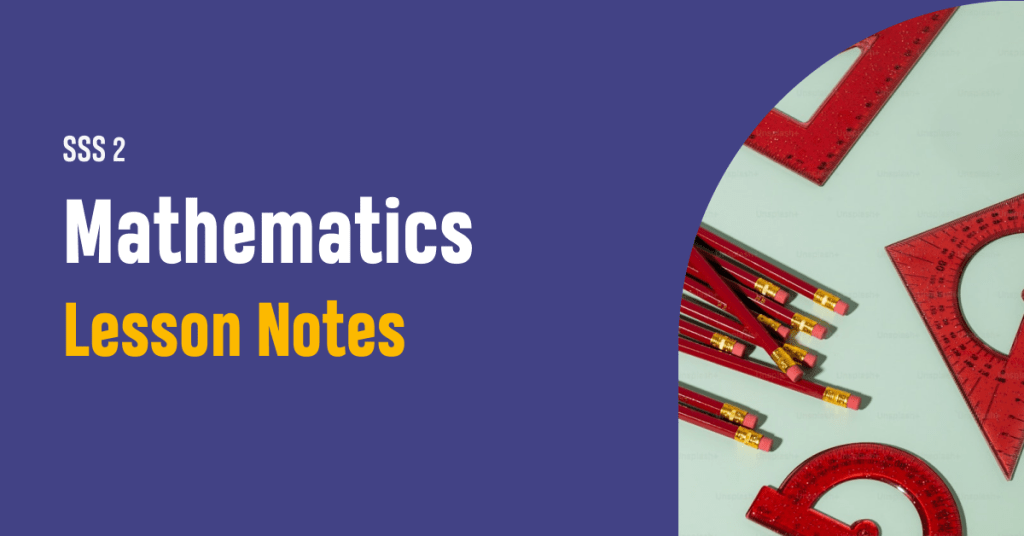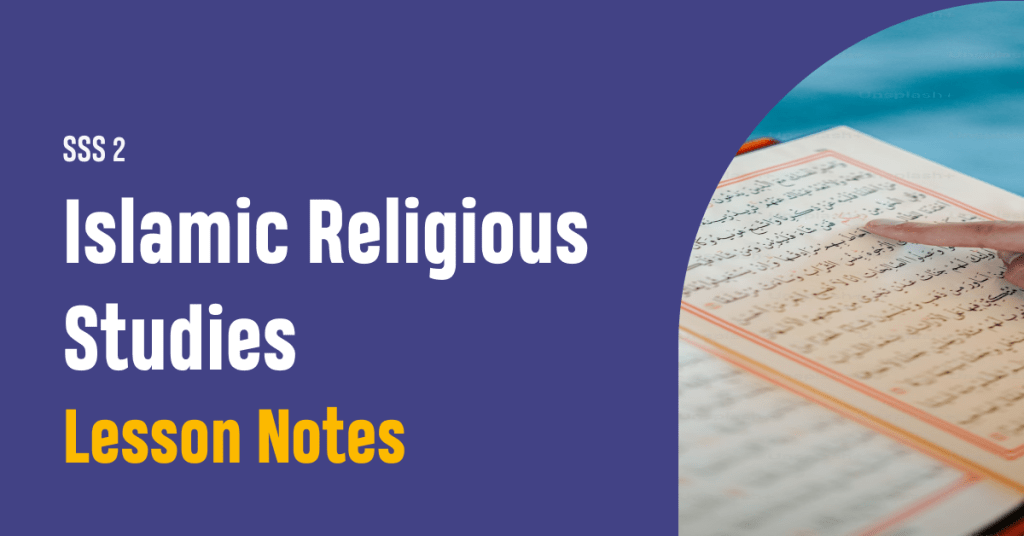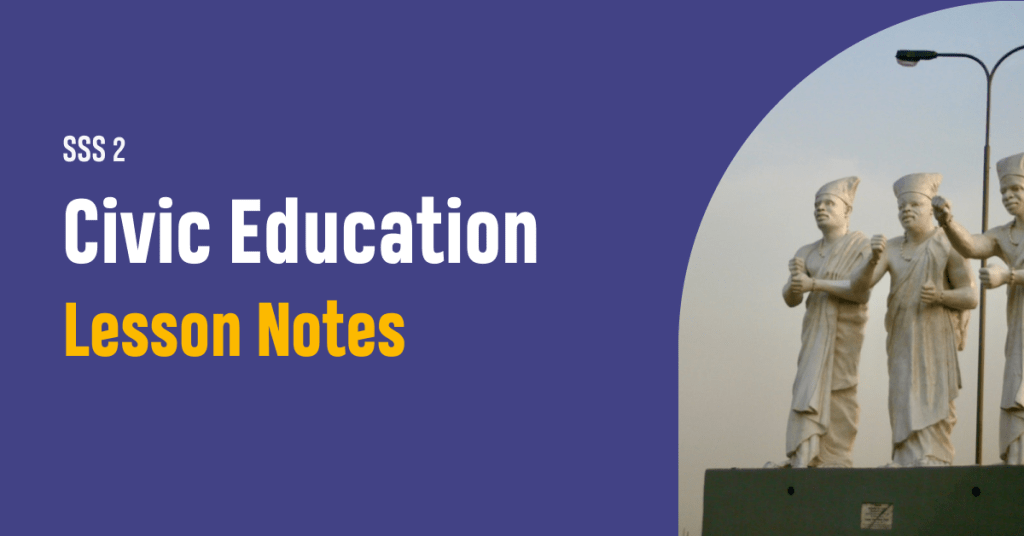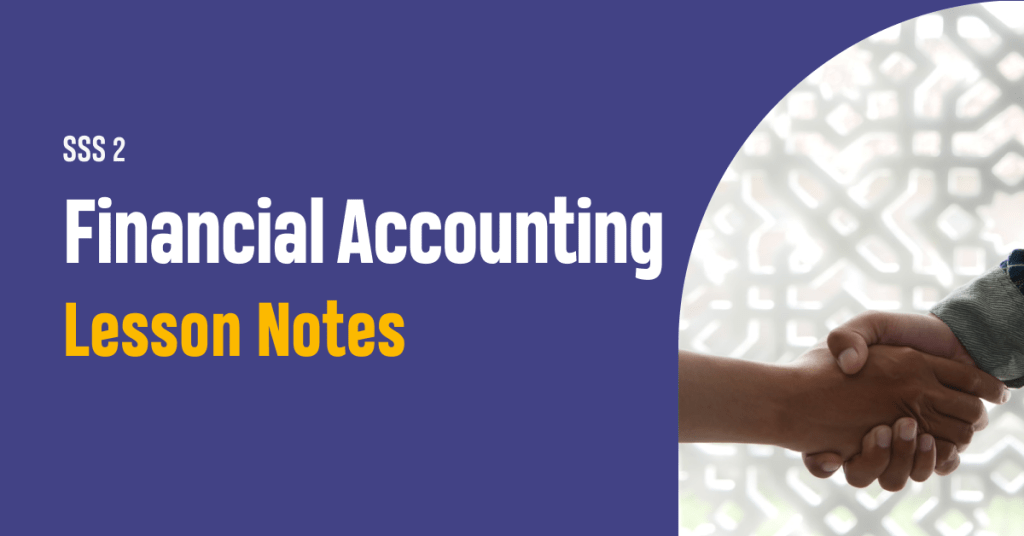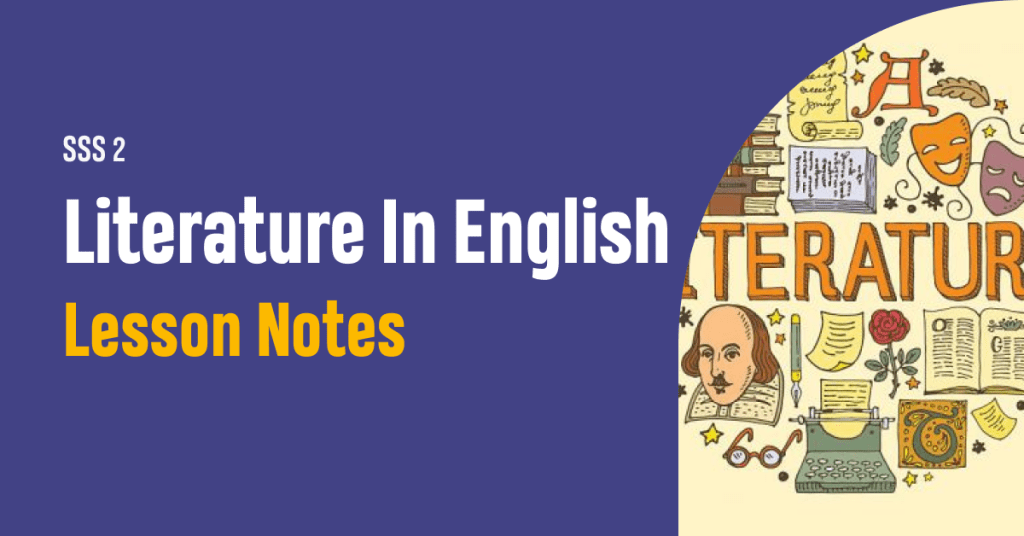SS2 Food and Nutrition Scheme of Work
Download the Senior Secondary School 2 (SS2) Unified Scheme of Work for Food and Nutrition to serve as a guide for educators

Home » SSS2 Scheme of Work » SSS2 Food and Nutrition Scheme of Work
Home » SSS2 Scheme of Work » SSS2 Food and Nutrition Scheme of WorkAbout SS2 Food and Nutrition Scheme of Work
Food and Nutrition in senior secondary school 2 (SSS2) is an important subject that helps students understand food science and nutrition and how to apply this knowledge in everyday life. It looks at how diet affects health and well-being, teaching students to make smart food choices and understand the need for balanced diets.
The Lagos State Unified Scheme of Work for Food and Nutrition aims to give students a strong base in nutritional science, practical cooking skills, healthy eating habits, and the ability to think critically about food information. Students will learn about essential nutrients, their roles, and where to find them.
The subject includes lessons, practical sessions, group discussions, and projects. Students will engage in hands-on activities like cooking, meal planning, and food analysis. This course not only helps students make better dietary choices but also prepares them to positively impact public health and the environment.
Achievement Standards
At the end of the SSS2 session, students can;
- Explain the importance of food nutrients to the body;
- Plan good meals for the family;
- Differentiate between modern and traditional kitchens;
- Discuss safety in the kitchen;
- Identify different methods of cooking;
- Analyse vegetables, legumes, fruits, and cereals;
- Highlight beverages and special diets;
- Prepare foreign and traditional dishes;
- Interpret cooking tests and set a well-balanced meal.
Assessment Guide
In SS2 Food and Nutrition, assessments include written exams to test theoretical knowledge, practical evaluations for cooking and food preparation skills, projects on topics like meal planning and nutrition analysis, oral presentations to enhance communication skills, continuous assessments through quizzes and assignments, and participation in group discussions and activities. These diverse methods ensure a comprehensive evaluation of both theoretical understanding and practical abilities.
Download SSS2 Food and Nutrition Scheme of Work

Know what’s expected of you as an educator
Download the Lagos State Unified Scheme of Work for Senior Secondary School Two (SSS2) Food & Nutrition.
SS2 First Term Scheme of Work for Food and Nutrition
| LAGOS STATE MINISTRY OF EDUCATION UNIFIED SCHEMES OF WORK FOR SENIOR SECONDARY SCHOOLS | ||
| Food and Nutrition Scheme of Work for Senior Secondary Schools 2(SSS2) | ||
| CLASS | SS2 | |
| SUBJECT | FOOD AND NUTRITION | |
| TERM | First Term | |
| WEEK | TOPICS | Learning Objectives |
| 1 | MEAT COOKERY | By the end of the lesson, students should be able to: i. explain meat and list the types of meat ii. describe the structure of meat iii. discuss the nutritive value of meat iv. enumerate the factors affecting the choice of meat v. justify the methods of cooking meat and meat dishes |
| 2 | POULTRY | By the end of the lesson, students should be able to: i. explain poultry with examples and the structure of poultry ii. demonstrate the preparation of poultry iii. discuss the nutritive value of poultry iv. highlight factors to consider when choosing poultry v. justify methods of cooking poultry and poultry dishes |
| 3 | EGGS | By the end of the lesson, students should be able to: i. explain eggs, it’s uses and nutritive value ii. discuss how to test for freshness of an egg iii. analyze the structure of an egg iv. justify the methods of cooking eggs and egg dishes |
| 4 | MILK AND MILK PRODUCTS | By the end of the lesson, students should be able to: i. explain milk and milk products ii. identify different types of milk and milk products iii. discuss the nutritive value of milk iv. highlight different methods of preserving milk and milk products v. identify milk dishes |
| 5 | SEA FOODS | By the end of the lesson, students should be able to: i. explain sea-foods ii. classify types of fishes iii. highlight the nutritive value of sea foods iv. enumerate factors to be considered when choosing sea foods v. justify methods of cooking fishes |
| 6 | FOOD ADDICTIVES | By the end of the lesson, students should be able to: i. explain food additives with examples eg flavoring, herbs and spices, etc ii. classify food additives with local and foreign iii. highlight the uses of food additives and put into albums or cardboards and should be well-labelled |
| 7 | MID-TERM BREAK | |
| 8 | PRACTICAL ON MEAT, POULTRY, MILK AND MILK PRODUCTS, SEA FOODS AND FOOD ADDITIVES | By the end of the lesson, students should be able to: i. prepare and serve different dishes on meat, poultry, milk, sea foods ii. make use of food additives I. preparing meals |
| 9 | STARCHY ROOTS AND PLANTAIN | By the end of the lesson, students should be able to: i. explain starchy roots and plantain ii. enumerate the different types of starchy roots and the nutritive value iii. discuss the different types of plantain and their nutritive value iv. highlight the different types of dishes made from plantain |
| 10 | PRACTICAL ON STARCHY ROOTS AND PLANTAIN | By the end of the lesson, students should be able to: i. prepare and serve dishes on starchy roots and plantain eg unripe plantain, yam potage, fufu, etc |
| 11 | TIME MANAGEMENT IN FOOD PREPARATION | By the end of the lesson, students should be able to: i. explain the meaning of time management and it’s advantages ii. highlight the principles guiding the effective use of time iii. enumerate steps in making time plan iv. prepare a time plan for different cooking duties |
| 12 | REVISION/EXAMINATION | |
SS2 Second Term Scheme of Work for Food and Nutrition
| CLASS | SS2 | |
| SUBJECT | FOOD AND NUTRITION | |
| TERM | SECOND TERM | |
| WEEK | TOPICS | LEARNING OBJECTIVES |
| 1 | ENERGY MANAGEMENT IN FOOD PREPARATION | By the end of the lesson, students should be able to: i. explain the meaning of energy management ii. discuss it’s advantages iii. highlight the principles guiding the effective use of energy iv. enumerate the steps in managing energy in cookery v. justify the meaning of fatigue |
| 2 | KITCHEN EQUIPMENT AND UTENSILS | By the end of the lesson, students should be able to: i. explain the term kitchen equipments ii. identify kitchen equipments for various types iii. classify kitchen equipments according to their types iv. analyze the selection, uses, care and storage of large and small kitchen equipments, fixtures and appliances |
| 3 | LABOUR SAVING DEVICES | By the end of the lesson, students should be able to: i. explain labour saving devices ii. discuss the uses of various labour saving devices iii. discuss the factors to consider when choosing labour saving devices iv. highlight the care and maintenance of labour saving devices |
| 4 | SPECIAL NUTRITIONAL NEEDS – Infants and children – Adolescents – Adults and aged – Pregnant and lactating mothers | By the end of the lesson, students should be able to: i. explain special nutritional needs and identify different age groups in the family ii. plan meals for different age groups eg infants, toddlers, children, etc iii. identify people with different physiological needs in the family iv. plan meals for different physiological needs |
| 5 | SPECIAL NUTRITIONAL NEEDS – Infants and children – Adolescents – Adults and aged – Pregnant and lactating mothers | By the end of the lesson, students should be able to: i. explain special nutritional needs and identify different age groups in the family ii. plan meals for different age groups eg infants, toddlers, children, etc iii. identify people with different physiological needs in the family iv. plan meals for different physiological needs |
| 6 | PROJECT ON TEST INTERPRETATION | By the end of the lesson, students should be able to: i. interpret questions correctly ii. write out interpretation on any question given |
| 7 | MID-TERM BREAK | |
| 8 | FLOUR COOKERY – Flour from local food stuffs eg cassava flour, corn flour, soya bean, flour,etc | By the end of the lesson, students should be able to: i. explain the term flour ii. discuss different types of flour eg soft wheat flour, instant blending flour, etc iii. identify different types of flour that we can get from local foodstuffs iv. highlight local flours that we have eg corn flour, and quantify the amount to be used with others v. enumerate dishes that can be prepared with locally made flour |
| 9 | RAISING AGENTS | By the end of the lesson, students should be able to: i. explain the term raising agents ii. identify different types of raising agents eg yeast iii. evaluate the composition of each type of agent |
| 10 | FLOUR MIXTURE | By the end of the lesson, students should be able to: i. explain the term flour mixture ii. discuss various ways of incorporating fats into flour mixtures iii. identify different products made from flour mixture eg batter, pastries, bread, etc |
| 11 | PRACTICAL ON FLOUR COOKERY AND CAKE DECORATION | By the end of the lesson, students should be able to: i. prepare dishes made from flour eg pastries, bread, cake, etc ii. decorate |
| 12 | REVISION/EXAMINATION | |
SS2 Third Term Scheme of Work for Food and Nutrition
| CLASS | SS2 | |
| SUBJECT | FOOD AND NUTRITION | |
| TERM | THIRD TERM | |
| WEEK | TOPICS | LEARNING OBJECTIVES |
| 1 | CONVENIENCE FOODS | By the end of the lesson, students should be able to: i. explain the term convenience foods, it’s uses, and forms with examples ii. highlight factors to consider when selecting convenience foods and canned foods iii. discuss the advantages and disadvantages of convenience foods iv. enumerate dishes that can be prepared using convenience foods |
| 2 | PRESERVATION OF FOODS | By the end of the lesson, students should be able to: i. explain the meaning of food spoilage ii. identify causes and agents of food spoilage iii. discuss the meaning and importance of food preservation iv. justify the principles underlining food preservation |
| 3 | METHODS OF PRESENTATION OF FOODS | By the end of the lesson, students should be able to: i. explain the various methods of food preservation |
| 4 | FOOD STORAGE | By the end of the lesson, students should be able to: i. explain food storage and it’s importance ii. describe various ways by which perishable and non-perishable foods may be stored iii. identify storage spaces and equipment eg refrigerator, deep freezers, barns, etc |
| 5 | PRACTICAL ON CONVENIENCE FOODS AND STORAGE LF FOODS | By the end of the lesson, students should be able to: i. prepare and serve dishes using convenience foods ii. use different methods of preserving foods eg drying, smoking, salting, etc to preserve foods |
| 6 | BUDGETING – Food budgetting | By the end of the lesson, students should be able to: i. account for how they spend their weekly pocket money ii. explain the terms: budgeting, income (gross, net), expenditure, family needs(primary and secondary), food budgets iii. discuss factors influencing budgeting and factors to consider when budgeting for food |
| 7 | MID-TERM BREAK | |
| 8 | FOOD PURCHASING – Project on shopping list | By the end of the lesson, students should be able to: i. explain the terms: bulk-purchasing, piece-meal, impulse buying, shopping list, petty cash ii. discuss the factors to consider before embarking on bulk purchases iii. highlight advantages and disadvantages of: bulk purchasing, piece-meal purchasing iv. prepare a food shopping list |
| 9 | CONSUMER EDUCATION | By the end of the lesson, students should be able to: i. explain the meaning and principles of consumer education ii. identify consumer agents iii. justify duties of consumer agents |
| 10 | CONSUMER EDUCATION II | By the end of the lesson, students should be able to: i. enumerate government agencies related to consumer education eg NAFDAC, SON, etc ii. discuss the functions of FCCPC- Federal Competition and Consumer Protection Commission (2018) iii. justify the consumer practices eg adulteration, misbranding, falsification, etc iv. |
| 11 | RÉCHAUFFE | By the end of the lesson, students should be able to: i. explain the term réchauffe ii. discuss the importance of using left-over foods iii. enumerate methods and principles of preserving left-over foods iv. analyze some réchauffe dishes |
| 12 | REVISION/EXAMINATION | |
Recommended Food and Nutrition Textbooks for Senior Secondary School 2
The recommended Food and Nutrition textbooks for SSS2 include but are not limited to the following:
- Foods and Nutrition for WASSCE and SSCE (Exam Focus) by J. O. Olusanya & Co. University Press PLC
- Foods and Nutrition for Senior Secondary Schools by Ministry of Education. Publishers – Evans Brothers Ltd., Ibadan.
- O’Level Cookery by P.M. Abbey and G.M. MacDonald. Publishers – Redwood Burn Ltd., Great Britain.
- Foods and Nutrition in Practice by Justina N. Anazonwu Bello. Publishers – Macmillan Publishers.
- Home Economics for Schools Books 1, 2, 3 by Ghana Home Science Association. Publishers – Afram Publications, Ghana.
- Cooking Explained by Barbara Hammond. Publishers – Longman Group Ltd. 6.
- Students Cookery Book by O’Reilly Wright. Publishers – Oxford University Press.
- Cookery for Schools by Melita Neil.
- Foods and Nutrition for Senior Secondary Schools by Nigerian Education and Research Council.
SSS2 Scheme of Work for All Subjects
Trade Subjects
Download SSS2 Food and Nutrition Scheme of Work

Know what’s expected of you as an educator
Download the Lagos State Unified Scheme of Work for Senior Secondary School Two (SSS2) Food & Nutrition.
